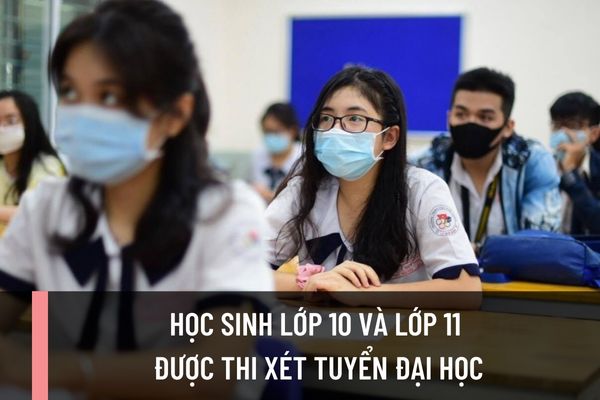Title: Can 10th and 11th Grade Students Take University Entrance Examinations and Preserve Their Results for 2 Years?
Are 10th and 11th Grade Students Eligible for University Admission Examinations at Hanoi University of Science and Technology and Ho Chi Minh City University of Education?
As of March 2023, ten distinct examinations have been announced. Among these, notably are the separate assessments at Hanoi University of Science and Technology and the competency-based examination at Ho Chi Minh City University of Education, specifically:
The thinking assessment by Hanoi University of Science and Technology and the competency-based examination by Ho Chi Minh City University of Education are examinations available to high school students currently or previously enrolled in secondary education. Therefore, in addition to 12th-grade students, 10th and 11th-grade students may also participate if interested.
Additionally, students are issued certificates valid for two years, with the results retained for two years to be used in university admissions.

Are 10th and 11th Grade Students Eligible for University Admission Examinations at Hanoi University of Science and Technology and Ho Chi Minh City University of Education? (Image from the Internet)
What Are the Basic Principles in University Admissions?
Pursuant to the provisions of Article 4, University Admission Regulations, and College Admissions in Early Childhood Education attached to Circular 08/2022/TT-BGDDT, the basic principles in admissions are as follows:
Fairness to Applicants
- Information provision: Each interested applicant is provided with complete, clear, reliable, consistent, and prompt information to make suitable decisions and best prepare for participating in admission;
- Opportunity to apply: No applicant is denied an opportunity to apply due to regulations unrelated to their qualifications or competency (except specific provisions of the Ministry of Public Security and the Ministry of National Defense in the fields of defense and security); or cumbersome, costly admission procedures;
- Ability assessment: Applicants must be objectively, fairly, and reliably assessed regarding their academic capabilities and potential for success, meeting the requirements of the program and field of study;
- Admission chances: Applicants must be given the highest opportunity to be admitted and the right to decide priority preferences among qualifying programs and fields of study;
- Commitment fulfillment: Training institutions must meet their commitments to applicants; provide consultation, support, and address complaints, protecting applicants' legitimate rights in case of risks.
Equality Among Training Institutions
- Cooperation: Training institutions collaborate equally to enhance the quality and efficiency of admissions while providing the best benefits to applicants;
- Competition: Training institutions compete honestly, fairly, and healthily in admissions as per legal regulations on competition.
Transparency to Society
- Information transparency: Training institutions are responsible for publicly announcing admissions information clearly and promptly through appropriate media for society and regulatory agencies to supervise;
- Accountability: Training institutions are responsible for reporting as required by state regulatory agencies and justifying to society in suitable forms regarding significant issues causing public concern.
What Are the Current University Admission Methods?
Pursuant to Clause 1, Article 6, University Admission Regulations, and College Admissions in Early Childhood Education attached to Circular 08/2022/TT-BGDDT, the methods of admission are stipulated as follows:
Admission Methods
1. Training institutions decide on one or several admission methods (entrance exam, review of academic records, or a combination of entrance exams and academic record review), applicable to the entire institution or specific programs, fields, and training forms. A program or field of study may simultaneously use multiple admission methods.
Current admission methods include:
- Admission based on the results of the High School Graduation Examination.
- Review of academic records.
- Admission based on the results of individual examinations.
- Direct admission and priority admission.
LawNet